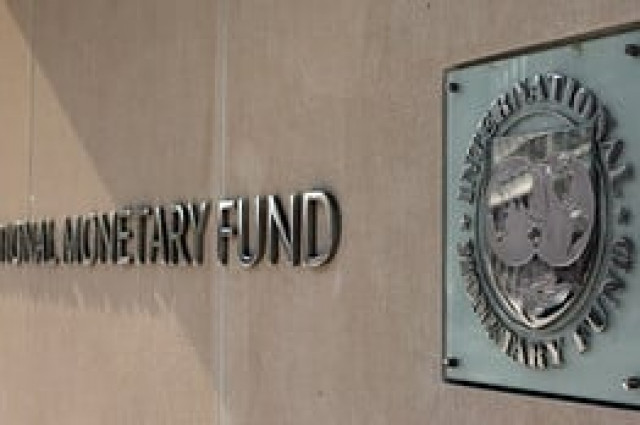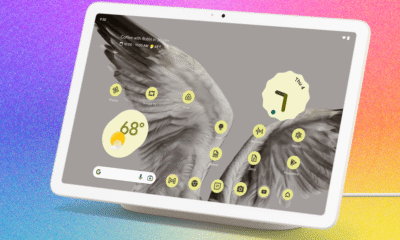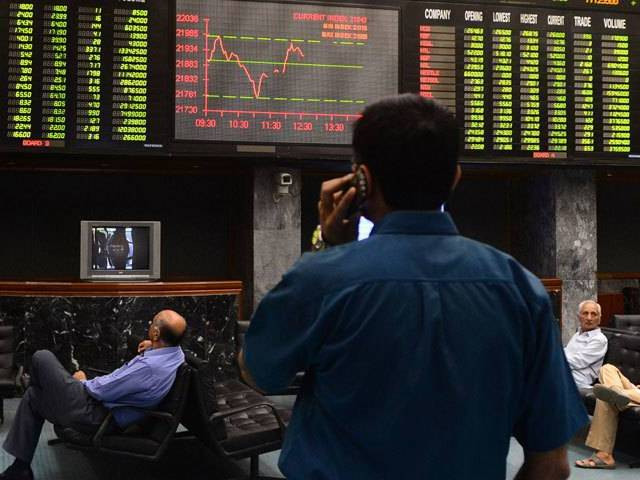Business
IMF warns global debt could hit 123% of GDP by decade’s end, nearing WWII levels | The Express Tribune

Warns of possible “disorderly” market correction that could trigger fiscal-financial “doom loop”
Global public debt is projected to rise above 100% of gross domestic product (GDP) by 2029, reaching its highest level since 1948 and continuing to climb, the IMF said on Wednesday, urging countries to build up buffers to guard against economic risks, Reuters reported.
Vitor Gaspar, head of the International Monetary Fund (IMF)’s fiscal affairs department, said global public debt levels could soar as high as 123% of GDP by the end of the decade under an “adverse, but plausible scenario,” just under the all-time high of 132% reached just after World War Two.
“From our viewpoint, the most concerning situation would be one in which there would be financial turmoil,” he said in an interview, citing a separate IMF report released on Tuesday that warned of a possible “disorderly” market correction.
That could unleash a fiscal-financial “doom loop”, like the one that occurred during the European sovereign debt crisis that began in 2010, Gaspar said.
Concerns over new US-China trade war
The IMF this week edged up its 2025 global growth forecast given a more benign impact from tariffs, although it warned that a renewed US-China trade war – which escalated after the numbers were locked in – could slow output significantly.
Gaspar said the highly uncertain outlook made fiscal reforms more important than ever, and the IMF was urging both advanced economies and developing countries to reduce their debt levels, cut deficits and build up buffers.
“With quite significant risks on the horizon, it’s important to be prepared, and preparation requires having fiscal buffers that allow authorities to respond to severe adverse shocks in the eventuality of a financial crisis,” he said.
Previous research by the IMF showed that countries with more fiscal space were better able to limit damage to employment and economic activity in the event of severe adverse shocks combined with a financial crisis, said Gaspar.
In its latest Fiscal Monitor, the IMF noted that rich economies had public debt levels already greater than 100% of GDP, or projected to surpass that level, including the United States, Canada, China, France, Italy, Japan and Britain.
Their risk is considered low-to-moderate since these countries have deep sovereign bond markets and more policy choices, while many emerging markets and low-income countries have fewer resources and face higher borrowing costs, despite their relatively low debt ratios.
Borrowing is far more expensive now than the period between the global financial crisis of 2008-2009 and the pandemic that began in 2020, Gaspar said. Rising interest rates are pressuring budgets at a time when demands are high due to geopolitical tensions, increasing natural disasters, disruptive technologies and aging populations.
“While we do recognise that the fiscal equation is very hard to square politically, the time to prepare is now,” he wrote in a forward to the fiscal monitor, noting that targeted public spending for education and infrastructure could boost GDP.
Investing in human capital could boost growth
Allocating just one percentage point of GDP from current spending to education or other human capital investment could boost GDP by more than 3% by 2050 in advanced economies, and almost twice as much in emerging market and developing economies, the IMF said.
In the US, public debt to GDP surpassed the post-World War Two peak during the Covid pandemic, and it is projected to surpass 140% of GDP by the end of the decade, Gaspar said.
He said IMF officials would urge US authorities to stabilise debt by shrinking the budget deficit during an upcoming review of the US economy that starts next month.
Cutting the US deficit would help rebalance the US economy, while freeing resources for the private sector in the US and around the world, helping to lower interest rates and making financing conditions more favourable, Gaspar said.
China’s public debt was also rising sharply, surging from 88.3% of GDP to an expected 113% by 2029, said the IMF, which is also planning a regular review of China’s economy next month.
Business
How Much Tax Is Applicable On Gold, Silver Gains? Know Tax Rates, ETF Rules And TDS

Last Updated:
Whether you invest in physical forms such as jewellery, coins, or bars, or through paper and digital modes like ETFs or Sovereign Gold Bonds, your gains are taxable.
Tax on Gold and Silver Gains.
Tax on Gold and Silver Gains: Gold prices have surged over 60% in the past year, while silver has doubled during the period, accruing gains for investors. However, gold, like any other asset class, also attracts capital gains tax on sale. Whether you invest in physical forms such as jewellery, coins, or bars, or through paper and digital modes like Exchange-Traded Funds (ETFs) or Sovereign Gold Bonds (SGBs), your profits are taxable. Here’s all you need to know:
Here’s a detailed look at how gains on gold and silver are taxed in India, along with the rules for ETFs and TDS applicability.
1. Tax on Physical Gold and Silver
When you sell gold or silver (jewellery, coins, or bars), any profit you make is treated as a capital gain. The tax depends on the holding period.
Short-Term Capital Gains (STCG): Returns from gold held for less than 24 months are termed short-term capital gains, according to cleartax.in.
Long-Term Capital Gains (LTCG): If you sell the asset after 24 months, the profit qualifies as long-term capital gains and is taxed at 12.5%. Also, if it was purchased on or after July 23, 2024, the same will be taxed at 12.5% without the indexation benefit. But, if purchased before July 23, 2024, investors can also avail indexation benefit with a 20% tax.
2. Tax on Gold and Silver ETFs
Gold and Silver Exchange-Traded Funds (ETFs) are treated similarly to physical holdings for tax purposes.
Held for less than 24 months: Gains are considered short-term and taxed as per your income tax slab.
Held for more than 24 months: Gains qualify as long-term and are taxed at 12.5%.
3. Tax on Sovereign Gold Bonds (SGBs)
Sovereign Gold Bonds, issued by the Reserve Bank of India (RBI), have a unique tax structure:
Interest Income: The annual interest (2.5%) paid on SGBs is taxable under ‘Income from Other Sources’ as per your income tax slab.
Capital Gains: If you hold the bonds till maturity (8 years), the capital gains are fully exempt from tax.
However, if you redeem them before maturity, after the 5th year, or sell them in the secondary market, LTCG at 12.5% applies.
4. Digital Gold and Silver
Many investors today buy “digital gold” or “digital silver” through fintech apps. The tax treatment is the same as physical gold —
Less than 24 months: Taxed as per slab (STCG).
More than 24 months: Taxed at 12.5% (LTCG).
5. Tax Deducted at Source (TDS) Rules
TDS applies when you sell physical gold or silver above certain limits or make large purchases:
On Sale: If you sell gold or silver worth more than Rs 50 lakh in a financial year to a buyer required to deduct tax (like a jeweller), TDS of 1% may be deducted on the sale consideration.
On Purchase: From July 1, 2021, if you buy gold worth more than Rs 10 lakh in cash, TDS/TCS (Tax Collected at Source) of 1% applies, and PAN/Aadhaar details are mandatory.
6. Gifts and Inherited Gold or Silver
If you receive gold or silver as a gift, it is taxable if the total value of gifts received during the financial year exceeds Rs 50,000, unless received from a relative or on occasions like marriage.
If you inherit gold or silver, no tax is payable at the time of inheritance. However, when you sell it later, capital gains tax applies based on the original cost of acquisition to the previous owner.
It is important to note that a 3% GST is applicable on gold purchases, apart from making charges and a 5% tax on that.

Haris is Deputy News Editor (Business) at news18.com. He writes on various issues related to personal finance, markets, economy and companies. Having over a decade of experience in financial journalism, Haris h…Read More
Haris is Deputy News Editor (Business) at news18.com. He writes on various issues related to personal finance, markets, economy and companies. Having over a decade of experience in financial journalism, Haris h… Read More
October 22, 2025, 16:46 IST
Read More
Business
Warner Bros rejects Paramount’s $60 billion buy offer; looking at alternatives: Report – The Times of India

Entertainment giant Warner Bros Discovery’s board has reportedly turned down a nearly $60 billion takeover offer from Paramount Skydance, a source told Reuters on Tuesday (local time). The company also announced that it will now look at other options for a possible sale.The board had rejected a mostly cash offer of around $24 per share for the company, whose assets include the Warner Bros film and TV studios, CNN, several cable networks, and the HBO Max streaming service. Shares of Warner Bros Discovery closed 11% higher on Tuesday.According to another source, Comcast may review the media giant’s assets as well. Netflix is also among the interested buyers, CNBC reported, following earlier reports that Paramount Skydance CEO David Ellison had been in talks to buy the entire company.Warner Bros, known for film franchises like Harry Potter and DC Comics, announced in June that it planned to divide its business into two parts by next year: one focused on studios and another on cable networks. The move aims to separate its fast-growing streaming segment from its weaker cable operations.The company said its board will now weigh several options, including going ahead with the planned split, selling the entire company, or pursuing separate deals for its Warner Bros or Discovery Global businesses. It is also considering another structure that could merge Warner Bros with a spinoff of Discovery Global.
Major shake up
A sale or breakup of Warner Bros Discovery would be one of the biggest shake-ups in the global media landscape. The rise of streaming has already changed how audiences watch content, pulling viewers away from traditional TV and cutting into advertising income.Any buyer of Warner Bros Discovery would gain control of a major Hollywood studio and a leading streaming platform but would also take on its massive $35 billion debt.The company, valued at around $45.36 billion, has seen its shares rise more than 46% since early September, when reports of Paramount’s interest first emerged.“Paramount is the most likely to purchase the company. For Netflix, a purchase would make more sense following the planned split because the studio would be very valuable to Netflix but the TV networks not as much,” said eMarketer senior analyst Ross Benes told Reuters.Warner Bros Discovery had already rejected an earlier bid from Paramount, which offered about $20 per share, as it was seen as too low, two sources told Reuters.Bank of America research analyst Jessica Reif Ehrlich estimated that the company’s full value was closer to $30 per share, given its rich portfolio of entertainment assets. “Given the company’s wealth of premium IP (Harry Potter, DC, Lord of the Rings, Game of Thrones, etc.) and robust library, we continue to believe Warner Bros is an extremely attractive potential acquisition target,” she said in an investor note.Meanwhile, Comcast is preparing to spin off its NBCUniversal cable channels, such as USA Network and CNBC, into a new company called Versant later this year.“Potential WBD suitors, including Paramount, Comcast, Netflix, Amazon and Apple, could see value in moving sooner rather than later to acquire the entirety of WBD versus waiting to purchase just the streaming and studios assets,” Seth Shafer, principal analyst at S&P Global Market Intelligence Kagan told the news agency.
Business
Gold rate today: Yellow metal rebounds from previous day’s record dip; global prices at $4,146 – The Times of India

Gold prices edged higher on Wednesday as a weaker dollar and bargain hunting lifted demand following a sharp fall in the previous session. Investors are now watching US inflation data closely for hints on the Federal Reserve’s next move on interest rates.Spot gold rose 0.6% to $4,146.47 per ounce at 0636 GMT, recovering some ground after tumbling more than 5% on Tuesday, according to Reuters.Gold and silver had fallen earlier in the day, extending the previous day’s losses. The yellow metal fell 6.3%, recording its biggest intraday decline in over 12 years. Silver also dipped more than 2%.The drop in these precious metals came as investors rushed to lock in their profits, taking their rapid gains. Concerns are also growing that the rallies have entered the bubble territory, Bloomberg reported.Tim Waterer, chief market analyst at KCM Trade said, “Profit taking moves started to snowball,” adding that the declines reflect “high temptation for traders to take profit at price levels which have never been seen before in the gold market.”The metals were dragged down by a combination of factors including geopolitical factors and the end of India’s season of gold buying.Experts call gold’s recent rally has been remarkable, driven by falling bond yields, steady central bank purchases, and hopes of further monetary easing.Fawad Razaqzada of City Index told Bloomberg, “Markets rarely move in straight lines.” “ While corrections are natural, it is worth pointing out that many investors missed out on the big rally. Soon, they may step in to buy the dip, which should keep the selloff contained.”
-

 Tech6 days ago
Tech6 days agoWhy the F5 Hack Created an ‘Imminent Threat’ for Thousands of Networks
-

 Tech1 week ago
Tech1 week agoWhat Is Google One, and Should You Subscribe?
-

 Tech3 days ago
Tech3 days agoHow to Protect Yourself Against Getting Locked Out of Your Cloud Accounts
-

 Fashion1 week ago
Fashion1 week agoUS brand Ralph Lauren reports 2025 sustainability progress
-

 Tech1 week ago
Tech1 week agoWhen does it pay for housing associations to replace water and sewage pipes?
-

 Business7 days ago
Business7 days agoBaroness Mone-linked PPE firm misses deadline to pay £122m
-

 Tech1 week ago
Tech1 week agoI’m a Smart-Home Addict, and These Are My Favorite Smart Displays
-

 Fashion7 days ago
Fashion7 days agoItaly to apply extra levy on Chinese goods to safeguard its own fashion industry











